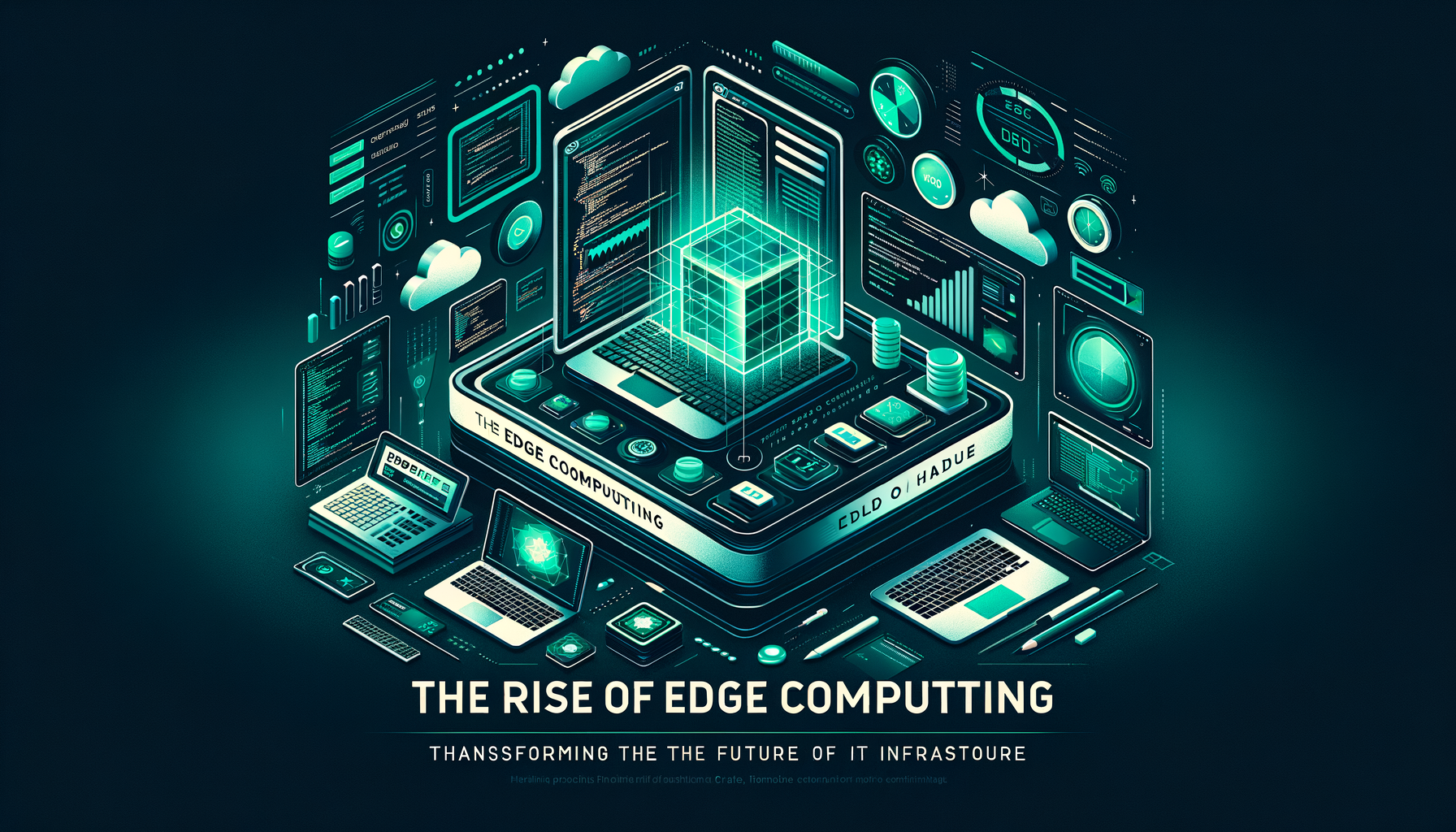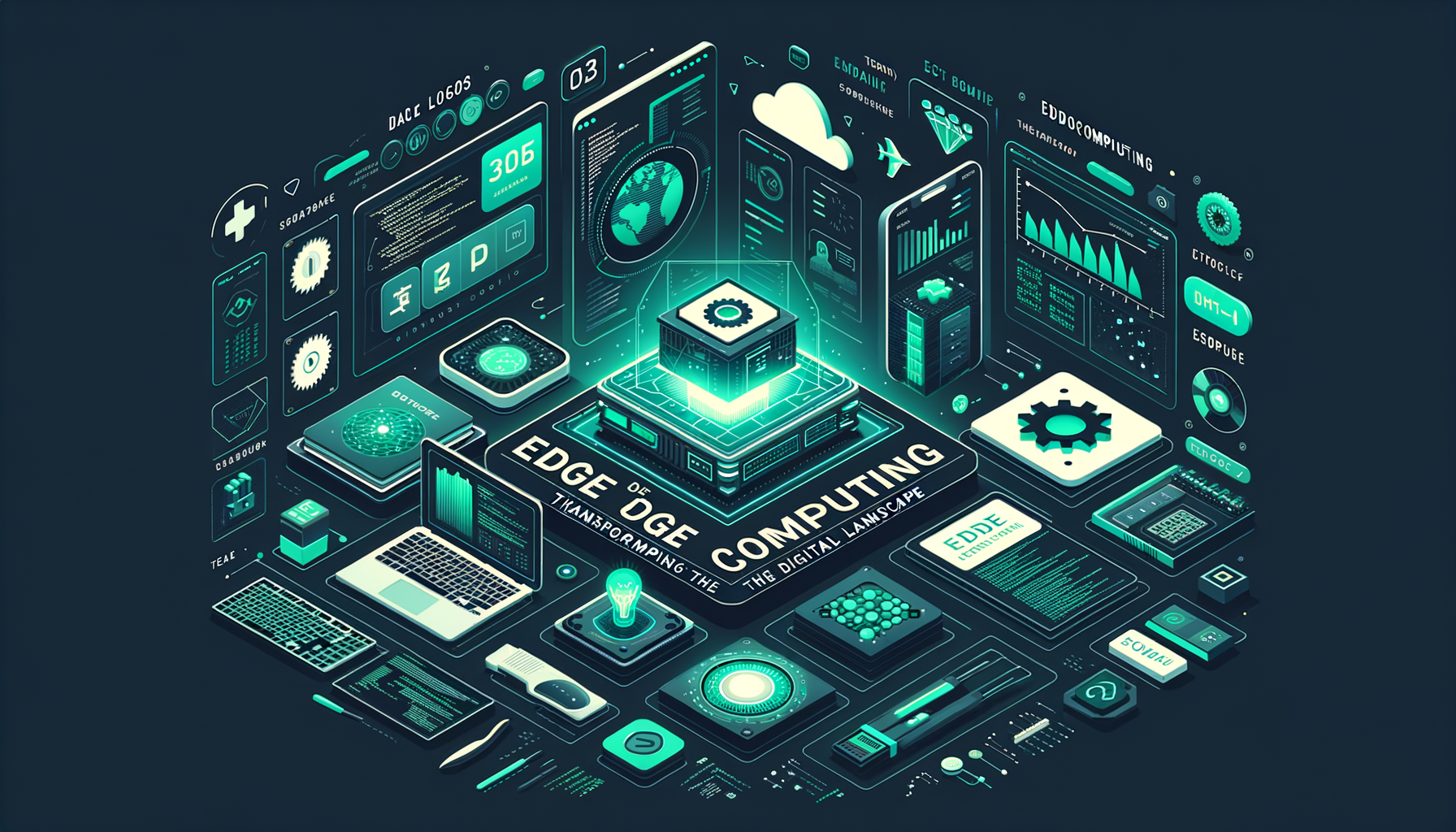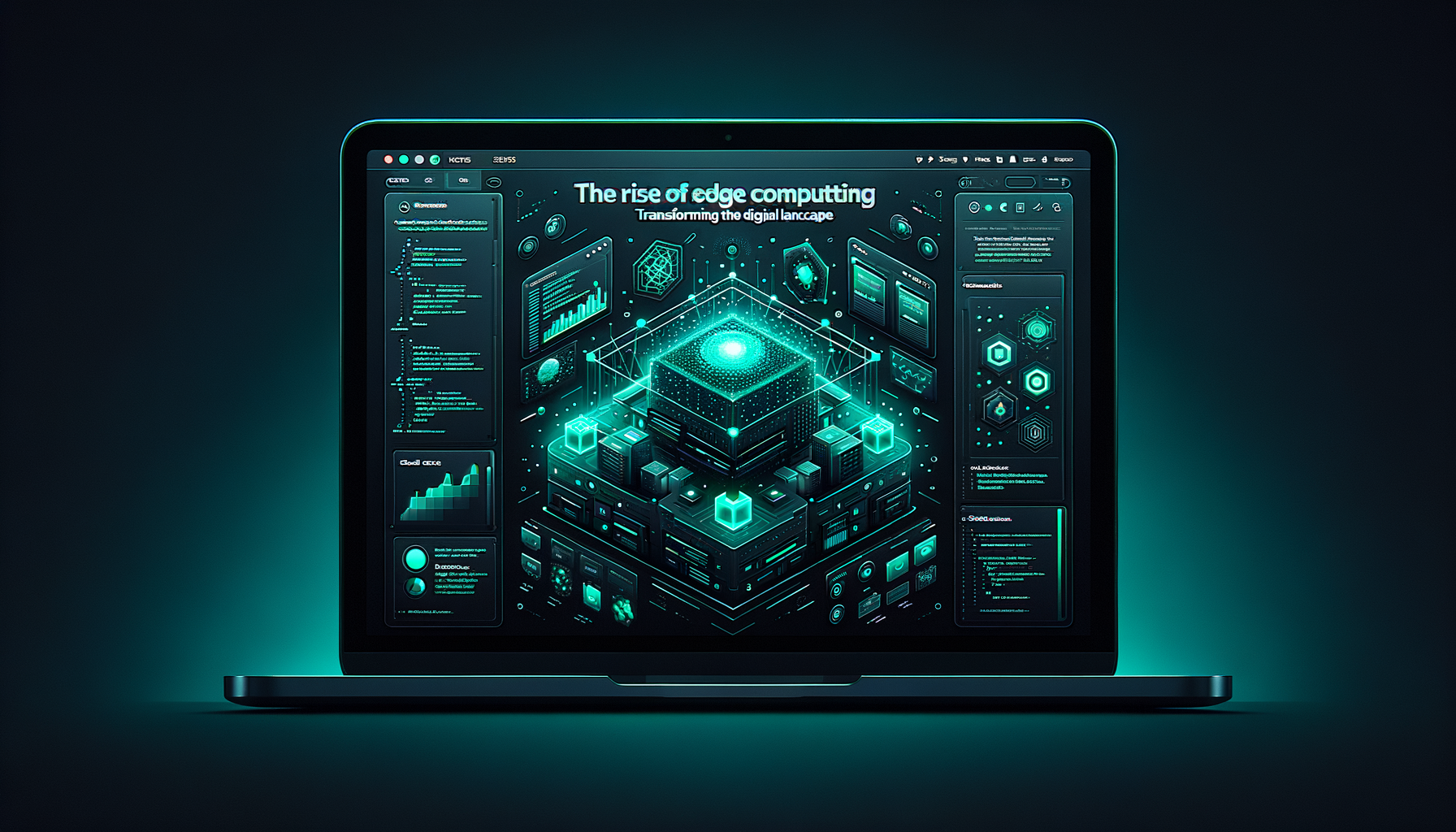
The Rise of Edge Computing: Transforming the Digital Landscape
Edge computing is revolutionizing data processing by bringing computation and data storage closer to the location where it's needed. Discover its impact and future potential.
Introduction
In recent years, edge computing has emerged as a pivotal technology that is set to redefine how data is processed and utilized across various industries. By decentralizing data processing closer to the source of data generation, edge computing promises to enhance speed, reduce latency, and improve data security.
Current State of the Industry
Currently, the edge computing market is experiencing rapid growth. According to Gartner, worldwide edge computing revenue is projected to reach $12 billion by 2024, reflecting an annual growth rate of 35%. This growth is driven by the increasing need for real-time processing and the proliferation of IoT devices.
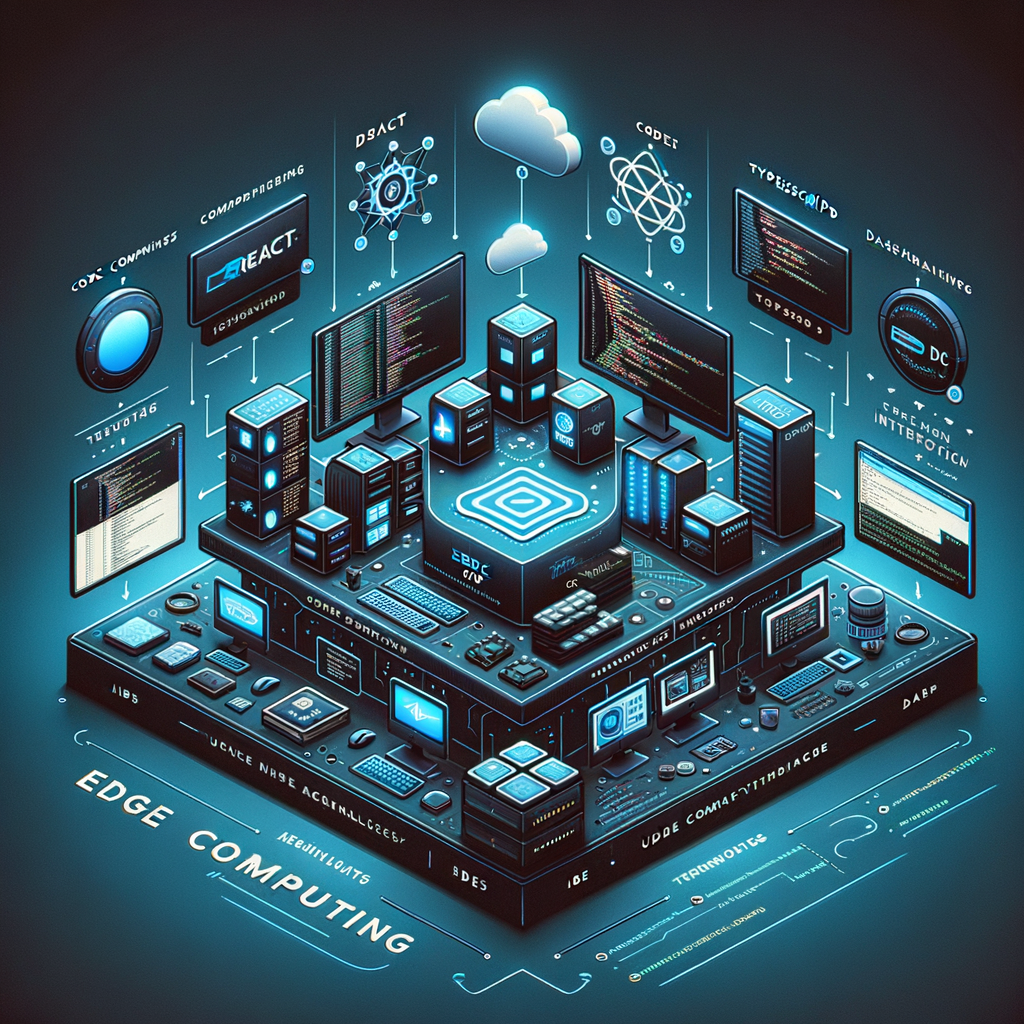
Key Developments and Catalysts
Several key developments have acted as catalysts for the adoption of edge computing:
5G Networks: The rollout of 5G technology has provided the necessary infrastructure to support high-speed data transfer, making edge computing more feasible.
IoT Expansion: The exponential growth of IoT devices generates vast amounts of data, necessitating localized data processing to improve efficiency and reduce bandwidth costs.
AI Integration: AI and machine learning applications benefit significantly from edge computing by enabling real-time data analysis and decision-making.
Analysis of Implications
Edge computing presents numerous benefits, including:
Reduced Latency: By processing data closer to its source, edge computing minimizes latency, which is critical for time-sensitive applications like autonomous vehicles.
Enhanced Privacy: Local data processing reduces the need to transmit sensitive data over long distances, enhancing privacy and security.
Improved Reliability: Edge computing can operate independently of centralized cloud servers, ensuring continuity of service even in case of network failures.
// Example of an edge computing function processing IoT data
function processSensorData(sensorData) {
// Perform local analysis
let processedData = sensorData.map(data => data * 2);
return processedData;
}
console.log(processSensorData([10, 20, 30]));
Potential Challenges or Concerns
Despite its advantages, edge computing also poses several challenges:
Infrastructure Costs: Deploying and maintaining edge devices can be costly, particularly in remote or rural areas.
Security Risks: While edge computing enhances privacy, it also introduces additional security vulnerabilities that need to be managed.
Interoperability Issues: The integration of diverse edge devices with existing IT infrastructure can be complex and require specialized expertise.
Predictions or Recommendations
Looking forward, the future of edge computing seems promising. Here are some predictions:
Increased Adoption in Smart Cities: Edge computing will play a crucial role in developing smart city infrastructure, enabling real-time traffic management and energy optimization.
Expansion into Healthcare: The healthcare sector will increasingly rely on edge computing for remote patient monitoring and personalized medicine.
Standardization Efforts: Efforts to standardize edge computing protocols will facilitate broader adoption and interoperability.
What Developers Should Watch or Learn
Developers should focus on:
Learning Edge Frameworks: Familiarity with frameworks like AWS Greengrass and Azure IoT Edge will be invaluable.
Enhancing Security Skills: Understanding security best practices for edge devices is critical to safeguarding data.
Embracing Cross-platform Development: Developing skills in cross-platform applications will aid in creating solutions that operate seamlessly across varied edge environments.
# Example command to deploy an edge application using AWS Greengrass
aws greengrass create-group --name MyEdgeGroup
Conclusion with Actionable Insights
Edge computing is poised to transform the digital landscape by enabling faster, more secure, and efficient data processing. Developers and organizations should prepare by investing in edge computing skills and infrastructure to leverage its full potential. By understanding the technology's challenges and opportunities, stakeholders can make informed decisions that drive innovation and growth.
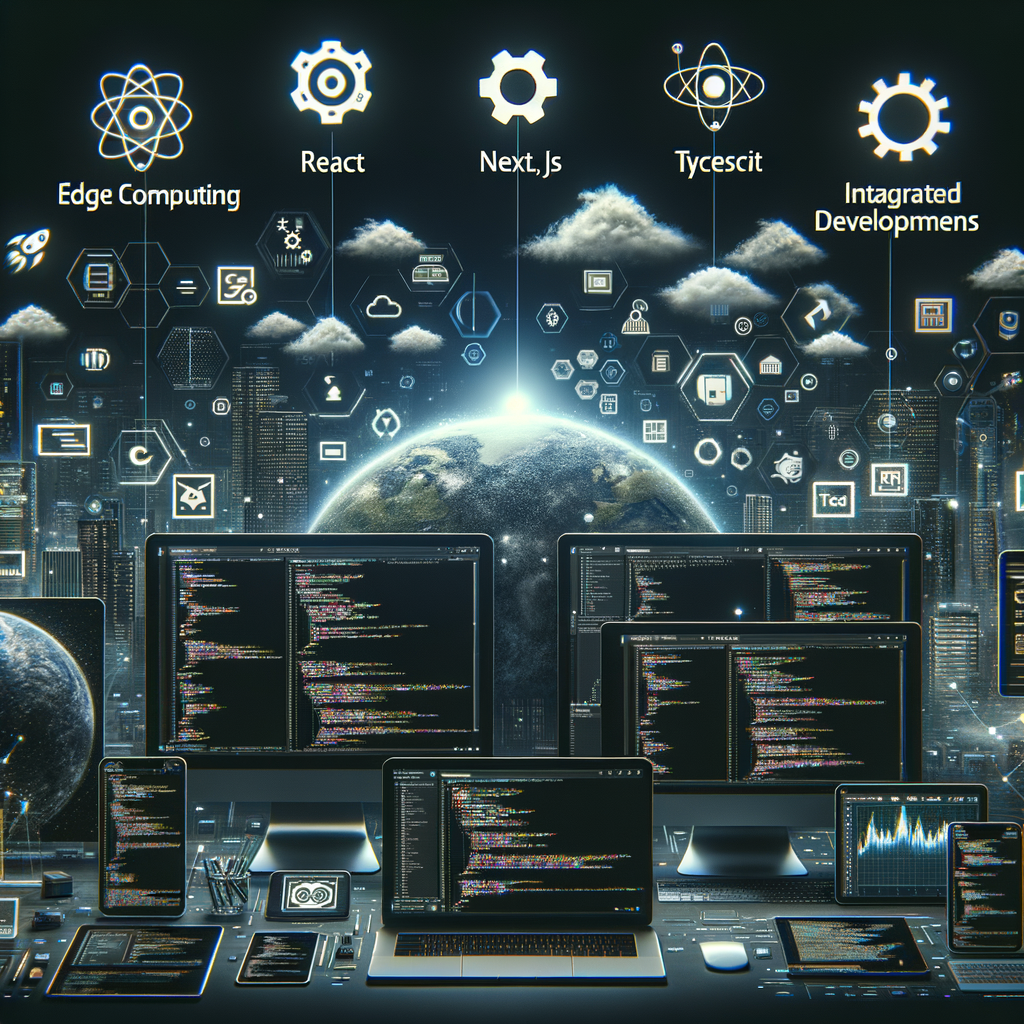
Comments (0)
Please sign in to comment
